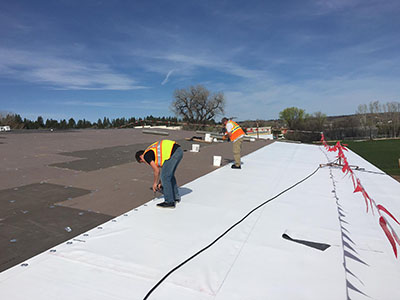The roofing system is one of the most crucial vital components of your home, serving as the first line of defense against the elements. It not just protects you and your family from harsh weather but also adds to the visual appeal and value of your property. Unfortunately, many homeowners fail to recognize the importance of routine maintenance and timely repairs, leading to premature roof deterioration. In this article, we will discuss expert tips on ways to extend the life of your roof, highlighting best practices that can save you money and hassle in the long run.
Understanding when it’s the right time for a replacement roof or simply a repair can often be challenging. With various materials available, each with its lifespan, knowing how to choose the best option for your home is essential. Moreover, keeping an eye on common roofing problems and regularly inspecting your roof can prevent minor issues from escalating into costly repairs. Join us as we delve into the ultimate guide to roof maintenance and replacement, ensuring your home remains protected for years to come.
Understanding Roofing Longevity and Replacement
Knowing when it's time for a replacement roof is essential for property owners. Roofs are not designed to exist indefinitely, and different factors affect their duration, including the materials used, the quality of installation, and the regional climate. On Residential roofing Nebraska , asphalt shingles have a lifespan of about 20 years, while metal roofs can last for up to 50 years or longer. Understanding the duration of your specific roof material is key to planning for a new roof ahead of major damage occurs.
As roofs get older, they begin to show signs that replacement is on the way. Common signs include missing or broken shingles, considerable granule loss, and visible sagging. Homeowners should keep an eye out for leaks, particularly after heavy rain or snow, as this can indicate underlying problems. Routine inspections and care can help you catch these problems in time, possibly prolonging the life of your roof and delaying the need for a full replacement.

When it does arrive time for a roof replacement, it's essential to consider different factors that can influence both the process and cost. The style of the new roof, the materials you select, and the complexity of your roof's design all play major roles in the overall cost. Additionally, understanding local building codes and employing a professional roofing contractor will ensure a smooth installation. Preparing for a roof replacement involves being informed about the best options for your home and budget.
Common Roofing Problems and Solutions
One of the most regular issues homeowners encounter is rooftop leaks, which can lead to serious damage if not taken care of promptly. Drips often occur due to worn-out shingles, improperly sealed flashings, or broken roof vents. To repair leaks, start by checking the roof for missing or damaged shingles and replace them as necessary. Applying roofing cement to gaps and sealing any flashing can also help stop water infiltration. For continuing leaks, it may be wise to consult a contractor to ensure a comprehensive repair.
Another typical issue is the growth of moss, algae, or mold on the roof surface, mainly in dark areas. This not only influences the aesthetic appeal but can also lead to rooftop damage over time. Frequent cleaning with a mixture of water, bleach, and detergent can help clean off these organisms. Installing copper strips along the ridge can also inhibit regrowth as rain washes off particle particles, creating an environment not conducive to moss and algae.
Finally, inadequate attic ventilation can shorten the lifespan of your roof by causing heat buildup, leading to shingle deterioration and ice dam formation in frigid months. Ensure that your attic is well-ventilated by checking the intake and exhaust systems. Incorporating vents or using roof fans can help ensure a proper airflow, stopping excessive heat and moisture buildup that can lead to serious roof problems. Routine inspections and upkeep of ventilation systems will also enhance the longevity of your roof.
Tips for Maintaining Your Roof and Increasing Its Longevity
To extend the lifespan of your roof, consistent maintenance is essential. This includes routine reviews to detect any problems or degradation that may not be visible from the ground. Homeowners should look for signs such as lost shingles, damaged tiles, or corrosion on metal roofs. It is also crucial to keep gutters clear and debris-free to prevent water backup, which can lead to roof leaks and further damage.
Effective attic ventilation plays a key role in maintaining roof condition. Adequate airflow helps control temperature and humidity, reducing the chance of ice dams in winter and overheating in summer. This not only prolongs the life of your roofing materials but also enhances energy efficiency within your home. Invest in quality vents and ensure they are functioning properly to promote a durable roof.
Confronting small issues in a timely manner can prevent financially burdensome repairs later on. For example, if you spot a handful of missing shingles or signs of moisture damage inside your home, act immediately. Employing a specialist for routine maintenance checks can provide reassurance and ensure that any underlying problems are caught early. By implementing these care techniques, you will help ensure your roof remains in good condition for years to come.
